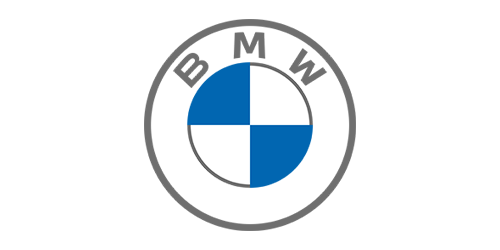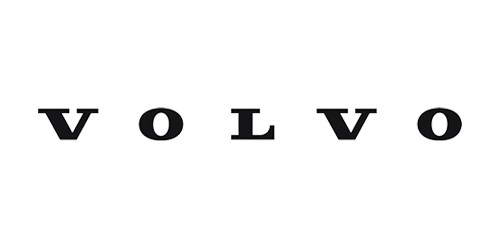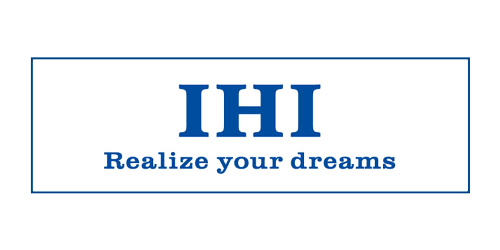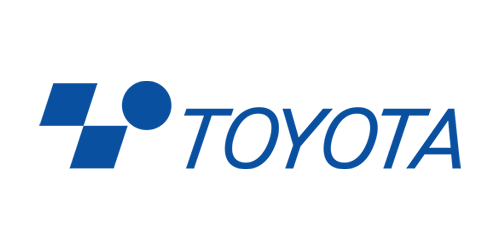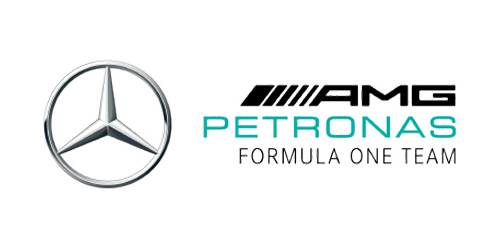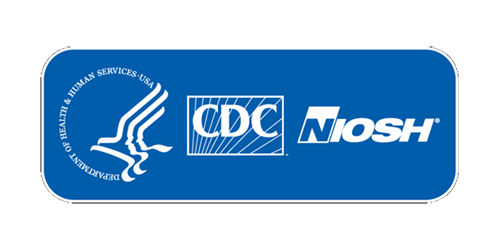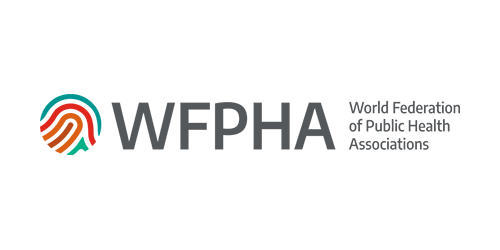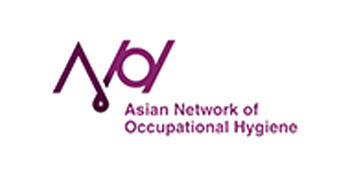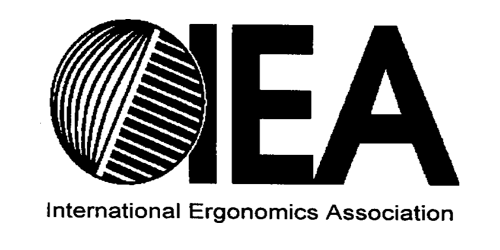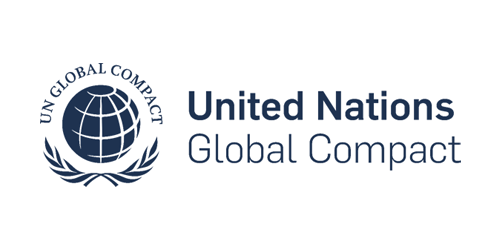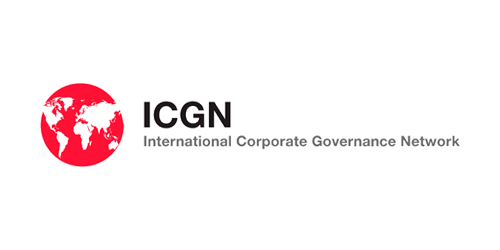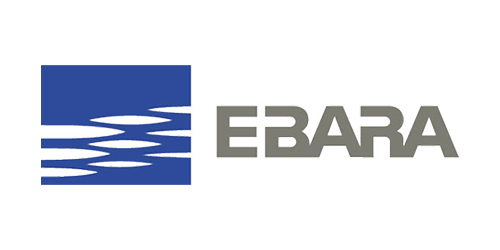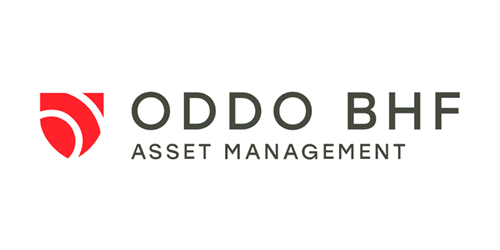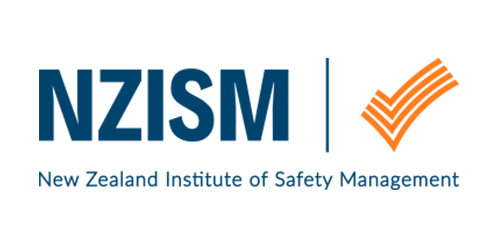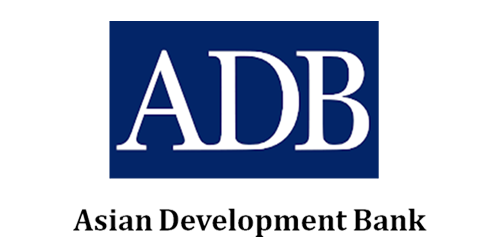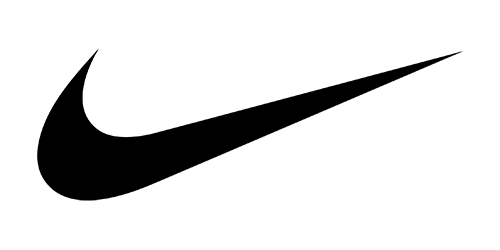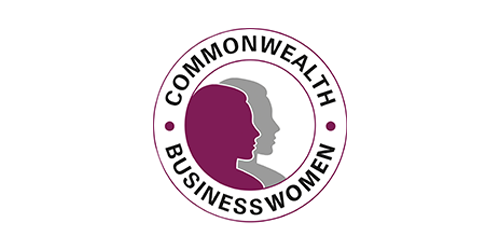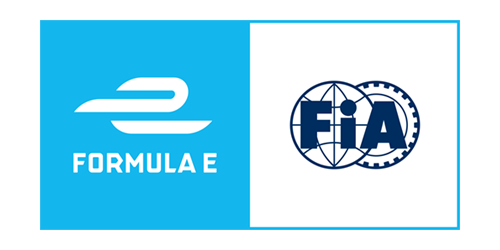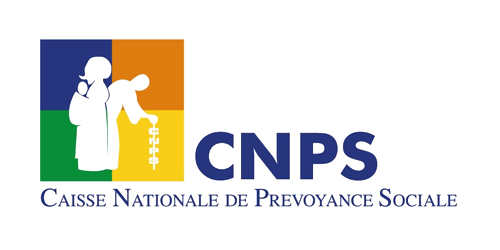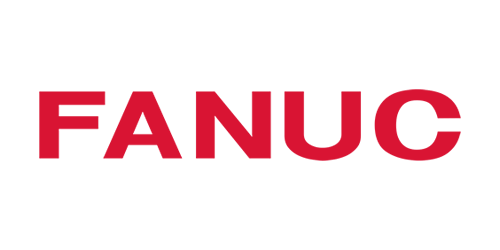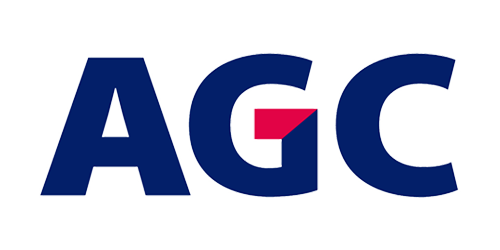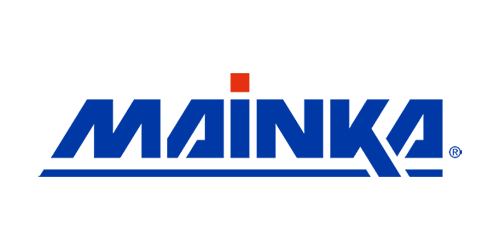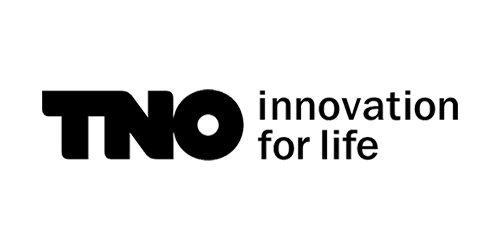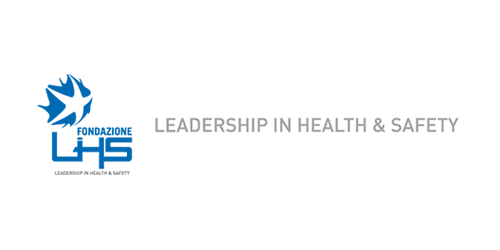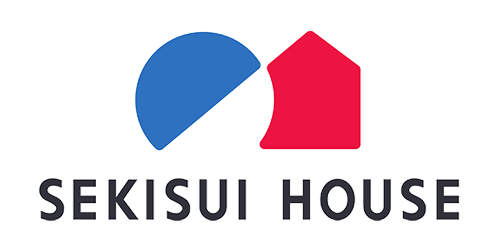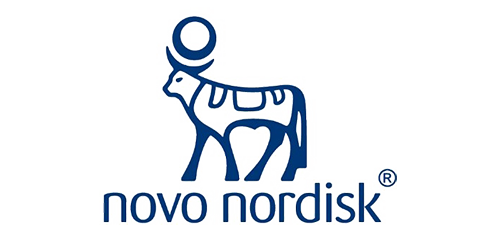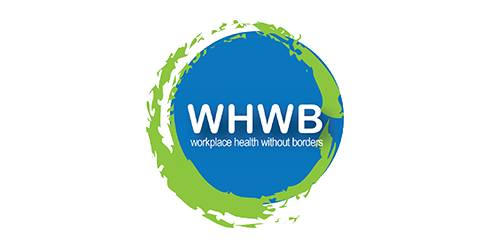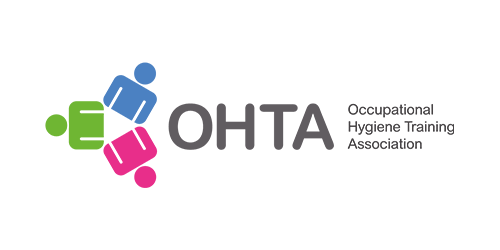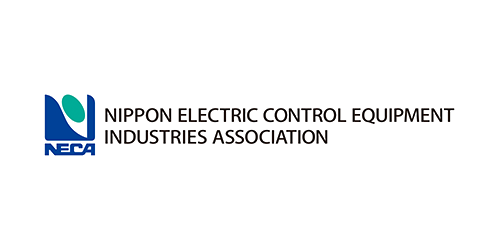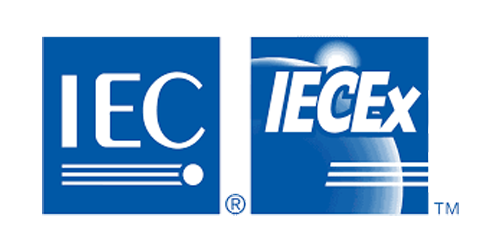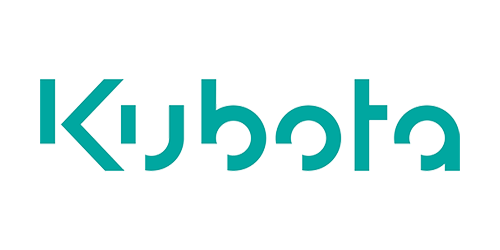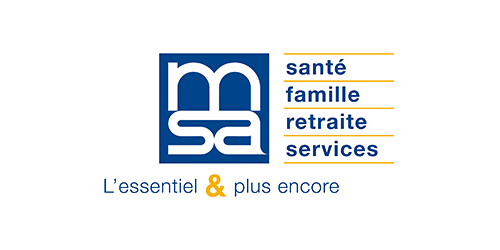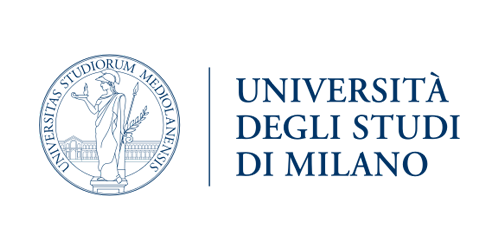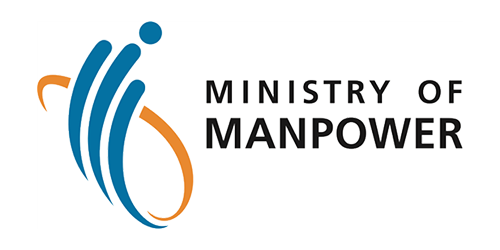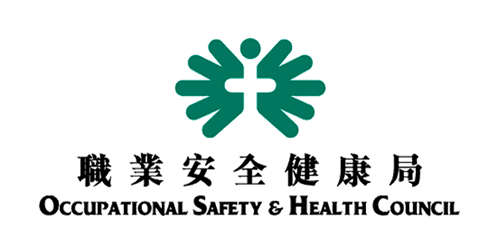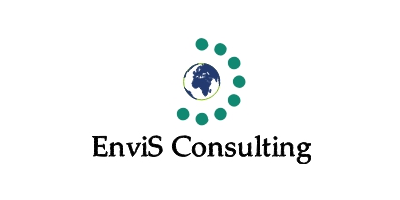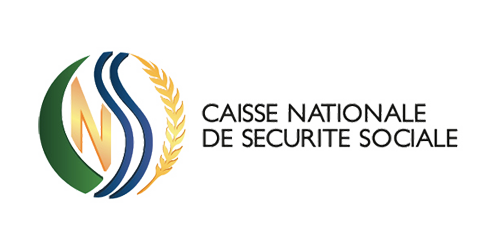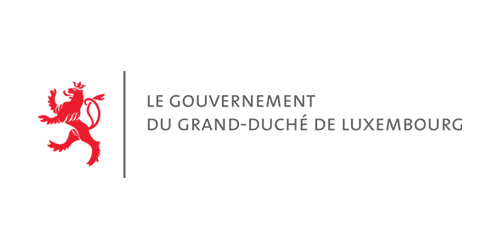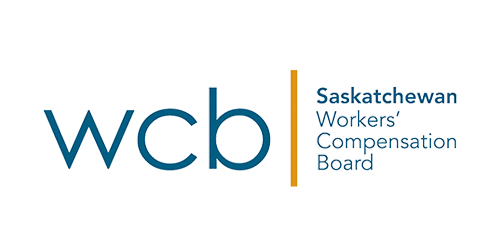
Programme

 Denmark
Denmark

Topic: Implementation of Vision Zero in Enterprises: From Vision to Reality
Health and sustainability have become top priories for businesses across the globe, as their overwhelming interest in joining the ISSA’s Vision Zero campaign clearly demonstrates. Safety, health and wellbeing are increasingly becoming an integrated part of the organizational culture as businesses recognize that their success depends more than ever on people. During the session senior OSH managers will share valuable insights and practical experiences from the Vision Zero journey of their companies. Special focus will be given the critical role of the leadership and the empowerment and active involvement of all employees in developing a prevention culture based on Vision Zero. The session will also explore how the Vision Zero mind-set can be promoted and developed in all business activities and at all locations of a company, and how it can be cascaded to all business partners, including supplier (sub)contractors and where relevant customers. Finally, as the world of work is changing dramatically due to the emerging digital economy, the related risks and opportunities for safety, health and wellbeing at work and thus for implementing Vision Zero will be discussed, and practical solutions be presented.
Sub chairs




Presentations
In 2020, L’Oréal, as many other companies saw the value of its shares fall as Covid-19 traversed the world However, as many parts of the world eased lockdowns and entered their “new normal”, L’Oréal is recognized as one of the most successful companies to survive the pandemic and Malcolm believes this is because L’Oréal firmly puts its people and their health, safety and wellbeing in the centre.
Malcolm will discuss L’Oréal approach to people sustainability, putting people in the centre and extending their culture of caring beyond the gates of L’Oréal.
He will give an overview of the critical and central role of the global Occupational Health & Safety network as a strategic business partner and how the profession needs to evolve to be “future fit” so it is more flexible and adaptable to both business and society needs in our VUCA world.
Pirelli, a Pure Consumer Tyre Company, with a particular focus on the High Value tyre market. With 19 production plants in 12 countries and a commercial presence in over 160, Pirelli has around 30,500 employees.
Pirelli’s commitment to the creation of sustainable value that characterizes the Company’s responsible management and its economic, social and environmental performance has resulted in its inclusion in some of the world’s most prestigious sustainability stock market indices.
The success of Pirelli is based on its values and on people value. According to this approach Pirelli implemented and and is pursuing the Excellence in safety program where people, are the main actors on workplace safety management. In more than 10 years of program several actions allowed to improve the safety culture and consequently the performance. In this experience people remain the key: as addressee, actors and leaders.
Tsubaki Nakashima is a global Company producing a broad range of high-quality precision balls, rollers, ball screws and other mechanical parts, and it’s a known brand in the Medical Devices and Ceramic business.
The Company has an Integrated Corporate Governance System aiming to continue to grow as an environmentally responsible and ethically aware business, sustaining transparency and good governance, using the Vision Zero’s approach. We are committed to providing safe and healthy working conditions, responsibly respecting the environment, in compliance with the requirements, encouraging the active participation of Employees.
The people who work with us have understood that this is a challenge that will allow us to build our future, they know that destiny is in the hands of each person, made up of small things and small gestures; they know that we have to play our part as protagonists of change, simply because the company is made up of people.

 South Africa
South Africa

Topic: Making global supply chains safer
Each morning, somewhere in the world, 1,000 people leave home for work and don’t come back, and another 6500 people die daily from diseases contracted as a result of an exposure to risk factors arising from work activity. These are the people who make our clothes. Grow the beans for our coffee. Construct the buildings in which we live and work. They need safe, healthy workplaces, and deserve our shared commitment to improving health and safety up and down the global supply chain. The G-7-mandated and ILO-administered Vision Zero Fund (VZF) mobilize governments, employers, workers and other stakeholders to make real, measurable improvements in worker health and safety where they are most needed. Working at all levels of the supply chain, from factories and fields to governments and global enterprises, the VZF strategically target sectors and regions where it believes it can make a positive difference.
This session will be divided into two parts. Part I will discuss what global buyers can do to improve safety and health along global supply chains, especially when operating in countries with weak or deficient national safety and health and employment injury protection schemes. Part II is dedicated to a discussion of Vision Zero Fund’s efforts to make global supply chains safer. It will highlight good practices and achievements, but also identify endemic challenges that will require the collective action of all stakeholders, including multinational enterprises and OSH practitioners, to address.
Presentations

 Japan
Japan

Topic: Mobility/Auto-mobile/Auto-Guided-Vehicle (AGV)
With the advancement of AI technology, the expectation of automated driving has been increasing. Human recognition technology is not only being used for automated driving in automobiles, but also for AGVs in factories as well. As a result, the use of autonomous mobile robots is expected to advance in a variety of fields. In this session, we will have an introduction to the technologies and applications for moving mobile robots more safely in spaces where people coexist, including automated driving, and confirm the direction of necessary safety technologies.
Presentations
This talk presents the safety of mobile vehicles among automobiles and robots. There are various types from automobiles to robots depending on the sizes, speeds, and purposes of the vehicles. The type shall determine traffic laws and safety standards applied to a vehicle as well as a type approval of a government and safety certification. The talk introduces the taxonomy of the types, laws and standards, and concluded by perspectives.
Volvo Group offers trucks, buses, construction equipment, power solutions for marine and industrial applications, financing and services that increase our customers’ uptime and productivity. Volvo is committed to increase safety both with regards to our workplace as well as to the environments where our products are used. Volvo’s founders put SAFER as a top priority back in 1927 and we see collaboration with road authorities, research organizations and other vehicle manufacturers as key to reach our safety vision. We want to understand the casual factors to why accidents occur and when things go right. We see human error as a symptom, not a cause, of a system which needs to be re-designed. We also acknowledge that human behavior is variable. Humans can be both bad and extremely good at handling decision making and anticipate upcoming events and behavior of other road users. A key design principle is to make sure people and our developed technology together can avoid critical situations. Different design principles for advanced driver-assistance systems and higher levels of automation are presented.
The work environment of robots will spread in environment of the human coexistence from the factory.
However, system integrators should deal with company’s own rules to manage robots in the factory, and the jurisdiction administration and laws and regulations to manage robots in the environment outside the factory are not fixed.
When the robot system should deal with diverse conditions, it causes design cost rising and obstructs the spread of robot business.
If there are the international standards such as performance indexes for each work environment, development speed will improve as well as cost reduction.
This presentation explains the strategy of Vision Zero concerning road safety. It demonstrates how much the way towards automated driving corresponds with the way towards Vision Zero. Using experiences from Germany and from the EU the presentation demonstrates that applying ten measures, only, some 90 percent of fatal and severe road accidents can be prevented. We know how to prevent nearly all fatal and severe road accidents, but we must bring this knowledge on the road!
Since the early days of Subaru, we have been striving for high safety performance based on the concept “Technology is for people”. The safety philosophy that has been handed down from generation to generation has led to the realization of Subaru’s unique “EyeSight” driving support system, which aims to “prevent collisions” in the first place. In this session, I explain the 30-year development history of EyeSight and the future of automated driving technology.
Daifuku manages safety in five-phase, aiming for zero accidents.
This time, I will introduce three examples of strategies.
1. Qualification acquisition and status of safety assessor.
2. Safety activities and status of overseas affiliates and Local employees.
3. Traffic accident and status of use of drive recorders as safety measures for company cars.
We will introduce our company, case studies, and the vision of logistics in 2030 under the theme of “AI Teamlogistics,” focusing on our efforts to ensure worker safety, health, and a better working environment in the logistics industry.
Toyota Industries Corporation was founded in 1926 by Sakichi Toyoda to manufacture and sell the automatic looms which he had invented and perfected. Since that time Toyota Industries has promoted diversification and expanded the scope of its business domains to include textile machinery, automobiles such as vehicles, engines, car air-conditioning compressors and so on, materials handling equipment, and electronics.
Regarding the Vision Zero initiatives, some case studies are presented with the key words “zero accidents,” “zero emissions,” and “zero complaints.
Finally we present the next generation of teamwork logistics between workers and automated working environment, using cutting-edge technologies such as artificial intelligence, as our 2030 Vision.
Stuart Hughes, Head of Health and Safety for Mercedes AMG PETRONAS FORMULA ONE TEAM, provides an insight into the workings the eight times consecutive World Champions. This presentation explores how OSH aligns and integrates into their high-performance environment, delivering on track performance. Focusing on leading with intent, performance under pressure, OSH leadership and empowering the employee voice. This presentation takes you behind the scenes and trackside, with insights from the Teams Leadership and employees to provide an understanding of how OSH is viewed as an enabler and can be utilised to deliver a competitive advantage in one of the sport’s most competitive environments.
The rapid growth of industrial applications using mobile and collaborative robots has generated new safety concerns in various workspaces. Though corresponding safety standards have regulated how a robot reacts when human workers are presented in a collaborative environment, physical characteristics and moving trajectories of robotic devices and end effectors can affect the trust in human-robot interaction. To provide a safe and comfortable workspace for human workers, it is necessary to understand the concerns of human workers while interacting with robotic devices. To enhance worker trust in the human-robots interaction, adequate interaction model needs to be integrated in robot operations. The research activities in this study adopted different machine vision techniques to acquire the movements of both robots and human workers in the same workspace. With the assistance of the adopted machine learning algorithms, both safety and trust can be taken into account.
FedEx touches 99% of the world’s GDP. Moving millions of packages a day takes not only a lot of people, but a lot of automation and robotics. In this presentation, R&D Senior Advisor Aaron Prather, pulls back the curtain to show how robots and automation are getting your package to you on time and safely.

 Japan
Japan

Topic: Construction Industry: Improvement of OSH and Productivity
It is very important thing that to increase productivity and provide our clients with low-cost, high-quality constructions in corporations. But it’s needed to enormous effort to build a structure at a low cost, or keeping swift pace, while ensuring safety. What this means is that we have to ensure both safety and productivity as we can’t afford to cause our clients inconvenience, such as delays in construction schedules due to ensure safety. That’s why we in the construction industry are implementing initiatives to make Safety Improvement and Improvement productivity coexist. In short, we would like to discuss the coexistence of Improvement productivity and Safety Improvement in the corporations in this session. We would also like to set a slogan as a goal for the session. Finally, through these discussions, we aim to promote awareness that contributes to the promotion of the SDGs and to the realization of well-being.
Sub chairs


Presentations
Currently, the main role and responsibility for health and safety during construction in Japan lies with the contractor. However, if safety during construction is taken into consideration from the upstream stage of a construction project, more definitive safety measures can be taken. Therefore, in this study, we investigated overseas good practices and collected the good examples of safety considerations during construction from the design stage. As a result, it was found that Europe, the U.S., Singapore, and other countries are promoting social frameworks that consider safety during construction from the design stage. This presentation systematically summarizes these findings and discusses the future prospects for the construction industry in Japan.
West Nippon Expressway Engineering Kansai is a group company of West Nippon Expressway Company Limited, which is responsible for the maintenance and management of expressway in the West Japan region.
In order to contribute to the development of local communities and the improvement of people’s lives, the NEXCO West Group is working tirelessly to ensure the safety, comfort, punctuality and reliability of expressways.
In this presentation, the latest tunnel lighting system that encourages drivers to take safe actions through dynamic lighting control, and the warning system that incorporates sensors into traffic control equipment to protect workers in the traffic control area from unexpected accidents, as well as other advanced technologies in the expressway industry that we have adopted in recent years to achieve a higher level of safety and security will be explained.
In Japan, while the working-age population is drastically decreasing, fatal and serious accidents in the construction industry account for about 40% of all industrial accidents. In order to establish a safe and security workplace in the construction industry, more advanced safety support systems are needed.
The innovative safety support system will be realized by managing the construction production process as a Digital Twin (Cyber-Physical System). By connecting the digital data of people, machines, and workplace obtained through the latest ICT and IoT to the platform, an organic linkage between cyber construction and physical construction will become possible.
We will introduce a proof of concept called Shimz XXR Vision that provides a safe and security in the workplace.
It is recognised that expanding nuclear power is an essential component of moving towards Vision Zero, but this requires public acceptance. One of the greatest barriers to this is assuring the safe management of all resultant radioactive wastes. Geological disposal is essential to such management, but most current concepts were developed decades ago and focused on the fundamental feasibility of implementation, rather than optimisation, to improve safety and environmental impacts (especially for construction). In this paper, the fundamentals of geological disposal are re-assessed – with a focus on the particularly challenging boundary conditions in Japan, and, by using knowledge management tools to facilitate lateral thinking, the potential for major performance gains is illustrated.
The objective of the project is to inspire mutual international learning about effective market leverage instruments for occupational safety and health (OSH) in supply chains in the construction industry.
First a comprehensive literature review will analyse the state of research regarding market leverage covering both empirical and more generic and theory-based studies. At a second stage more than 30 case studies from several European countries will analyse buyer-supplier dyads regarding best practices. The lessons learned of the project will be shared in a series of interactive workshops with key European stakeholders, such as social partners, enterprises and labour inspectorates.
The role of the Section ISSA-Construction is primary to ensure the supervision on the state of practice and knowledge and contribute to the implementation of best practices taking into account the socio-economic and cultural context of the countries in the world.
The fatality rate in the field of construction is still higher than that in other industries.
With its prevention strategy “Vision Zero” ISSA Construction ─ by using appropriate preventive measures ─ seeks to create a working environment where no individual is injured or killed at work nor suffers from serious injuries or occupational diseases. To achieve this, ISSA Construction are using the seven Golden Rules as a basis and describes measures which contribute to meeting the named objectives.
There is a need for integrating ‘proactive’ key performance indicators (KPI) for safety, health and wellbeing (SHW) into construction business process, as supplements to traditional ‘reactive’ indicators such as injuries (accidents) and sickness absence. A selection of proactive and leading KPIs will be presented, such as following up and learning from toolbox meetings and safety rounds, which have shown to be effective in preventing construction injuries in many countries. Additional KPIs can deal with integrating SHW in on-boarding, (refresher) training, procurement, as well as leadership commitment and worker involvement, and can be adapted to small, medium and large construction companies.
Along 2020 and due to the pandemic rules, we have had to balance two different streams: First at all Infrastructures, Construction and Operation have been considered essential activities all around the world. Not only civil works but also water supply, ports, railways became critical services for the society.
But on the other side, mobility was seriously restricted and the expert physical assistance to sites and projects was seriously limited.
In that scenario, technology based on VR, AR and IoT has been rapidly incorporated to OHS practices and procedures.
Today, we have implemented a set of new solutions that allows Acciona to maintain the highest standards of technical support, audit processes and control of the highest challenging activities as heavy constructions, mining, bridges and other risky activities as infrastructures maintenance under remote on line capability to act and support our local resources with the best experts wherever they are in any moment.
The future will recover presential activities but the resources for monitoring in real time all the activities globally will remain and will change the OHS policies and personal skills.
A culture of prevention depends to a large extent on how errors and undesirable events are dealt with. In companies with an open error culture, errors are seen as learning opportunities. This is the case when the working atmosphere allows employees and supervisors to talk about mistakes without fear in order to learn from them. An open discussion of mistakes and their systematic evaluation can help prevent worse accidents from happening in the future and can lead to new ideas or even innovations. An open error culture goes hand in hand with other characteristics of a positive corporate culture: respectful interaction and a trusting working atmosphere. As role models, managers play a decisive role in shaping the corporate culture and thus also the error culture. For employees, on the other hand, it must be predictable what happens when something goes wrong.
This presentation will cover how Skanska has digitized it’s ISO 45001 / 14001 providing a completely paperless management system that covers all environmental health and safety aspects of their business (Including COVID-19 aspects of risk and associated control processes) The digitized software platform “PlanIt” has been developed internally at Skanska and is utilized from corporate level down to craft worker (Including Subcontractors) using mobile devices to identify risk factors and associated means and methods to mitigate using the most current best practices within the company data repository. The control processes are continually enhanced and updated using a digital update feedback loop that follows the PDCA continuous improvement cycle ensuring both legal compliance and best practice applications are in place at all times. The PlanIt program has been developed to be used in design, pre-construction and execution phases following the hierarchy of control model and has integrated remote video auditing (RVA) and artificial / human intelligence check function that feeds data and video snapshots of complaint and non-compliant behaviors to the frontline workers and supervision / project management. This digital “Check” function is proving to be groundbreaking in changing worker behavior and advancing new technology at the cutting edge of the construction industry and holds huge potential for multi-industry application using predictive analysis that incorporates leading and lagging indicator assessment that optimizes schedule, quality, safety and profitability outcomes.
India’s GDP has seen sustainable growth in recent years with flurry of activities in infrastructure sector.
Larsen & Toubro is pioneering the construction landscape of India.
With substantial unskilled and untrained workforce the construction is quite challenging.
With clear management mandate; innovative methods; robust incident investigation and digital intervention, L&T is driving towards its mission of “LIVE INJURY FREE EACH DAY”.
Its top management believes in training its workforce to create a safe and healthy work environment by shaping policy framework of the nation.
Commitment drives the policy and implementation is the key to well-being.

 Canada
Canada

Topic: Health/Hygiene/COVID19
The World is facing the worst pandemic for over a Century with the Coronavirus SARS-CoV-2. Many countries faced the pandemic with different approaches as something this importance has never been experienced before. We will discuss and learned from the best practices, and less good experiences, that was implemented in different countries. Before this pandemic, ILO had estimated that approximately 2,8 millions workers were already dying from their work, mostly from non-communicable disease (asbestosis, silicosis, lung cancer, etc.) The experience and lessons learned from Covid-19 must be applied to continue protecting general population and workers from hazards, We will finally discuss in this session about how we can better protect workers and population’s health from their work, life habits, their cultural legacy and their environment.
Sub chairs


Presentations
The health sector is one of the most hazardous sectors with health workers facing a range of occupational hazards and associated health risks. While contributing to the enjoyment of the right to health for all, health workers should also enjoy the right to healthy and safe working conditions to maintain their own health. This session will feature WHO and ILO tools, and recommendations for the protection of health and safety of health workers, including in the context of the COVID-19 pandemic.
Latest Global Estimates of 2021 indicate that 2.9 million workers die every year (2019 data), the number has gone up from 2.78 in 2017 data released by ILO. The global GDP lost by mortality and disability at work has risen from 3.9 % of the global GDP to 5.4%, mainly due to new method calculation of the loss caused by psychosocial risks not earlier estimated.
Zero harm can be approached better when preparedness and anticipation of emerging risks, such as those by biological factors and climate change are taken seriously into account in planning.
Italy was the first country affected by Covid after China and was forced to take unprecedented containment and mitigation actions, at least in a western democratic country. The first lockdown of an entire community of 60 million inhabitants, the race to equip themselves with masks and ventilators, public health measures, the largest vaccination campaign in Europe, the fight against fake news and vaccination hesitancy. The lessons learned have been many but they are not easy to implement and the challenge continues.
The International Occupational Hygiene Association (IOHA) represents more than 35 member associations from across the globe and aims to achieve synergy and promote the profession and improve workplace health across the globe. This presentation provides a status overview of current global occupational hygiene demographics and aims to also provide a perspective on what is required to take occupational hygiene into the future to help eliminate work related ill health and disease.
A remote real-time monitoring system was developed to overcome the limited accessibility of industrial hygienists to the workplace due to COVID-19. The monitor consists of three sensors and 5G communication chipset. The sensing signals from the site are transmitted to the server system for interpretation and appropriate feedback. Also, a self-monitoring assistance system was developed for SMEs’ workers.
When we see “internet of things”, let’s make it an internet of beings.
When we see “virtual reality”, let’s make it a shared reality.
When we see “machine learning”, let’s make it collaborative learning.
When we see “user experience”, let’s make it about human experience.
When we hear “the singularity is near”, let us remember: the Plurality is here.
The arrival of COVID-19 had a mix of both good and not so good impacts on the development of occupational hygiene professionals in Africa. Firstly, due to a sloppy science on the role of fomite and aerosol transmission, the ceasing of capacity development programs through collaborations. On the other hand, it later provided a platform to accelerate the professions’ ongoing growth prospects. The presentation will focus on AUDA-NEPAD’s work, challenges, and opportunities amidst COVID-19.
ICN was the first organization to systematically analyse data on nurse COVID-19 related infections and deaths. The presentation will share this work and all what has been done by ICN to respond to the pandemic and show how nursing organizations are ensuring the retention of the nurses in the COVID-19 pandemic and improve occupational health and safety.
Covid-19 abruptly changed working conditions, often for the worse, in several work sectors and increased awareness of health risks. To tackle the new risks, Human Factors/Ergonomics (HFE) provides perspectives and methodologies to address the new challenges. HFE is a design driven discipline that focuses on how humans interact with and within work systems. The aim is to find ways to avoid elements that can overwhelm the mental and physical capabilities and reduce the well-being of working people by focusing on the work system holistically rather than individual risks.
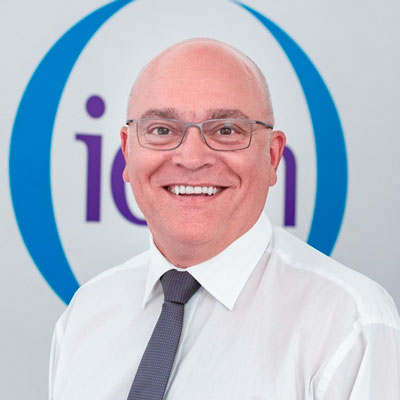
 United Kingdom
United Kingdom

Topic: Future business leaders: achieving healthier performance and productivity
Global trends are shaping a new world of work, with changes in workplace demographics, technology and working practices, as well as responses to the Covid-19 pandemic, putting increasing pressure on businesses to operate sustainably and responsibly. As a consequence, managers and leaders must now focus not only on what results are delivered, but how those results are obtained. At the heart of this is good OSH practice and this should be part of every manager’s and leader’s accountability. Without exception, good sustainable businesses invest in the safety and the physical and mental health and wellbeing of their people. They plan and pursue their objectives in ways that prevent harm and provide benefits. Managers and leaders must progress beyond simple regulatory compliance to understand instead how the wellbeing of their staff can deliver reputational and competitive advantages. They must look outward and care about the communities in which they operate. They need to work to mitigate their impacts on the environment and society, and they consider the principle of social good in all that they do. Businesses like these seek leaders and managers who are constantly proactive in finding ways to grow and improve. They seek leaders and managers who look to the long term and actively plan for change. The leaders and managers they attract will build resilient organizations which gain enviable reputations and win more business. These entities will find it easier to recruit and retain great people, to make better client relationships and they are championed by their local community. In summary, good businesses are more successful when placing OSH at the heart of their management and leadership frameworks. This panel session discusses the core competencies required to deliver excellent OSH performance in work settings, and it showcases examples of how outstanding OSH leadership and management practices have been driven throughout their corporate DNA
Sub chairs


Presentations
This panel session specifically focuses on driving OSH through corporate governance and sustainability – how do we influence the boardroom so that OSH is at the heart of and in the DNA of the organization from the very top down.
This panel will further discuss a business case for OSH leadership, arguing for a Healthy Profit as a way to achieving responsible, sustainable national and corporate success, among other things looking at the importance of reporting metrics on OSH.
This panel session discusses the complexities in improving OSH across key supply chains, and it showcases examples of how the ILO Vision Zero Fund focuses on improving OSH in key sectors, how investors such as ADB support good OSH practice in their projects and will also showcase outstanding OSH practices that have been driven throughout a collaborative manufacturing process. We conclude this session with views on the OSH and supply chain related challenges faced by businesswomen and female workers across the Commonwealth.
In this last panel discussion, we will try to bring the previous three discussions into a very practical focal point and discuss what can be done collectively to help advance the core competencies required to deliver excellent OSH performance in ALL work settings – especially in hard-to-reach working settings, like SMEs, along the supply chains. The key message is that “no one can thrive unless we are all safe”, so it is our moral imperative collectively to strive towards a safe and healthy world of work for all.

 Switzerland
Switzerland

Topic: Vision Zero Proactive Leading Indicators
The Proactive Leading Indicators are offered by the International Social Security Association (ISSA) as a free supplementary tool for every enterprise and organization committed to VISION ZERO, be they advanced or beginner, large or small, local or international. The Proactive Leading Indicators can be used for multiple purposes: improving safety, health and wellbeing, working towards external business relations and supply chains, or for benchmarking purposes. They were developed by sourcing information and evidence from leading VISION ZERO organizations, scientific literature, publications from other reputable sources (e.g. national agencies, industry), and the expertise and experience available in the project team and steering committee. The session will showcase the science behind the indicators, offer practical solutions and provide application examples and results achieved by companies.
Sub chairs


Presentations

 Japan
Japan

Topic: Think of Human Factors -Toward the realization of a safe, secure and well-being society
In this Session, human factors about safety, health and happiness will be discussed. In addition, not only these three factors but also well-being at work would be the topic of this session. In this session six authorities of Human Factors would give talks.
A principle of human behavior from a research field called [Behavior analysis] and some examples of experiment using the principle would be introduced. Also, specialists of Human Factors at National Institutes of France and Finland will introduce research outcomes, such as technologies in the transport and logistics sector, and human-focused work practices in nuclear maintenance operations from human side. Then, a chief consultant from venerable Danish consultant company in working environment and management will introduce Proactive Leader Indicator (PLI) leading to worker well-being. In addition, a researcher having background in human geography and cultural anthropology, will show results from explored the fields of social housing relocation projects, peri-urban disaster management, water governance and volumetric urbanism. Our common focus and goal are better, safer, happier lives and higher well-beings of human at work. In the future, it will be necessary not only to prevent accidents and ensure safety, but also to change social systems to directions toward happiness and welfare through a positive cycle such as rewards not punishment. For that reason, research on human factors will become important in the future.
Presentations
Powered exoskeleton is beginning to be used to support independent gait in patients with spinal cord injury (SCI). So far, there have been some reports on methodology for walking assistance and usability of the exoskeletons, but the current situation is that measures for occupational safety for therapists themselves have hardly been examined. As the first step of the goal of building a safety checklist for caregivers, behavior of Ohysical Therapist (PT) was observed and analyzed in the present study.

 Japan
Japan

Topic: Robotics/Collaborative safety
Recent advances in IoT devices have made it possible for people and machines to work together or co-operate safely. We will collect reports and discuss issues related to safety technologies, practices, and standardization when humans and robots, or various machines share time and space to operate in a variety of work environments, not only in manufacturing, but also in various other work environments.
Presentations
The talk will briefly present the results of recent scientific studies that should be taken into account when considering human-robot safety. Biomechanical corridors from human subject studies, based on pain thresholds, show human body stiffnesses and limits. They can be used for a safe operation of a power- and force-limited robot.
Cobots have come to be used in many manufacturing fields. On the other hand, there are many issues of risk countermeasures due to being caught in workpieces and jigs, and research and development as a means of ensuring more practical safety and security and helping each other in the future is desired. In this report, we will provide topics on examples of collaborative use of automobile manufacturing lines and examples of evaluating the physical burden on people using cyber-physical systems. We will discuss future issues and prospects for people-centered collaboration manufacturing.
This talk will take a look at current trends in human-robot collaboration with a few examples of recent activities in this field. Finally I will identify and briefly discuss some key trends for the future of the field.
There are many kinds of autonomous ground vehicles and this presentation focuses on autonomous mobile machines and mobile robots. Autonomous mobile machines are applied in outdoors applications and their safety systems rely usually on access control and on-board safety systems. The mobile robots are used often indoors and there are plenty of suitable on-board safety sensors to be applied. Currently one common challenge with both autonomous mobile machines and mobile robots is that there are plenty of different applications and the current requirements are written only to specific cases. The variety of mobile vehicles is increasing.
Robotics have long been used for dirty and dangerous tasks, thereby contributing to reduced risks for workers. With the “new normal” requiring resilience and agility – despite the labour shortage, greater automation is needed. Smaller robots and mobile robots enable the automation of tasks that are dull and injury prone. Often the solution is partial automation to work collaboratively with people. The results are fewer ergonomic strains, sprains and injuries while experiencing increased productivity.
We newly established risk reduction system, named “Safeguarding Supportive System (SSS)”, which is proposing to ISO. It is established to prevent human error and intentional unsafe behavior from mechanical side (hardware side). The SSS would reduce residual risks with appropriate ITC combination. We examined efficacy of the SSS at a rental company of portal workbench. We examined 1) whether RF-tag system was adequately operated by workers, 2) whether UWB-active-RFID system precisely monitored and captured workers movement and location in real time, and 3) whether gateway monitor system appropriately monitored entering into and leaving from the work zone. As results in the present study, there were no differences in relative ratio of correct count, safe failure and dangerous failure in zone A1 and those of B1. Time and trace of movement of workers were recorded by UWB active RFID system. Also, the system could be confirmed of state of the simultaneous works of more than one worker.
As the labor shortage due to a falling birthrate and aging population has accelerated, the demand for collaborative robots that can realize automation at manual production sites without safety fences has been increasing exponentially. I would like to introduce the features of collaborative robot with ease of use even for first-time robot users and application examples, including safety aspects.
Presented as a key to competitiveness, collaborative robots are generating a lot of interest in the industry. Many see it as a way to combine human know-how with the endurance of these robots designed to work in proximity to workers. Nevertheless, collaborative robotics raises the question of how to integrate them into companies because of the new human-robot coactivity that it implies. This can lead to physical risks but also to psychological constraints. The conference reminds us of the importance of a global risk prevention approach when putting in place a robotic cell. The consideration of human and technical factors throughout the deployment process ensures a successful integration. The different technical and organizational solutions are addressed. Finally, the conference opens on current and future developments in terms of AI, mobile robotics, etc.
Machines for collaborative work with humans, such as service robots and assist suits, have appeared. These machines realize efficient collaborative work in anticipation of the actions and movements of workers. Therefore, the safety measures that have been applied so far are not sufficient, and an essential safety design that considers functional safety in the collaborative work content is required. In addition, since the risks and safety measures change dynamically depending on the relationship between humans and machines, dynamic risk management is required. The safety of collaborative machines is under discussion in the ACOS and IEC White Papers, and this presentation will explain the latest situation.
Until now, based on the recognition that human behavior is unpredictable, the image of a predicted accident and the necessary safety measures have been discussed (Accident preventative Safety). In the future, in order for humans and robots to cooperate, technology to predict human behavior is required. That is, human modeling is important. By accurately modeling individual people, it is possible to predict human behavior using technologies such as AI. By using an accurate model of an individual, work support suitable for the individual is possible. This leads to improved productivity. In other words, improving safety enables individual human management and increases productivity. This is a new safety concept (Productive Safety).
Currently, when discussing the safety of industrial robots in collaborative work systems, pain is the norm and the protective interval distance is determined. However, as robots coexist in closer proximity to humans to service them, the protective spacing distance alone becomes irrelevant to the discussion. In this presentation, I would like to ask the following question: depending on the frequency of human-machine contact, can the norm of internal bleeding as well as the norm of pain be determined as the upper limit of safety data? This is the position that ISO/TR 21260 is based on.
Due to the difficult challenge of construction and a shortage of labor, we started our development of working robots in 2016. The robots have the ability to work while moving to the next location autonomously. We have designed these robots to be functionally safe and to incorporate risk avoidance. Safety management of robots and workers has also been taken into account.
The implementation of robots began last year. We would like to introduce the feature of the safe and effective robots.

 Japan
Japan

Topic: Safety, Health and Well-being Activities in Manufacturing Sites
This session will introduce examples of Vision Zero activities and health and safety activities (Zero Accident Movement) in workplaces in various countries, aiming to reduce occupational accidents, occupational diseases and risk factors in manufacturing sites to zero.
Vision Zero is a global campaign involving companies and organizations that share the belief that all disasters, illnesses, and injuries are preventable, and the fundamental values of safety, health, and happiness. Currently, 11,000 companies and organizations are participating in this campaign, and the number is increasing every year.
Through this session, we aim to build an international network to achieve zero occupational accidents.
Sub chairs




Presentations
This presentation introduces “Building a Safety Culture in IDEC”.
“Safety Culture” evolves through the four stages as follows;
Reactive stage → Dependent stage → Proactive stage → Team learning stage.
Evolving Safety Culture requires strong motivating power.
IDEC’s activities feature that Vision Zero’s 7 Golden Rules is the pillar of activities and that clever approach to foster a sense of belonging is taken in the organization. Belonging is about feeling comfortable being involved in the organization while showing the best of ability in one’s own way and is an important factor of Well-being. The specific topics are as follows.
1.Leadership of top management
2.Positive changes brought by ISO45001 management system
3.Two tools to foster a sense of belonging:
・Awareness Report
・Risk Assessment sheet
4.Human resources development which encourages obtaining safety-related qualifications depending on the type of job.

 Japan
Japan

Topic: Well-being and SDGs
“Well-being” is newly introduced for Occupational Safety & Health activities by Vision Zero. Recently, organizations which consider the “Well-being” as one of the key management targets, have been increasing. Vision Zero supports such trend. It also brings the sustainability of business development as well as people’s decent working life, thus contributes to the achievement of SDGs. The SDGs have become an indispensable aspect for business and society now and in the future.
In this session, the following subjects will be discussed by world opinion leaders from academia and business.
(1) Concept and role of well-being
(2) Well-being and organizational approaches in corporate management
(3) Environmental changes and the growing importance of well-being in OSH
(4) Well-being, Innovation and International Standardization
(5) How to understand SDGs, SDGs /ESG management by organizations
Sub chairs



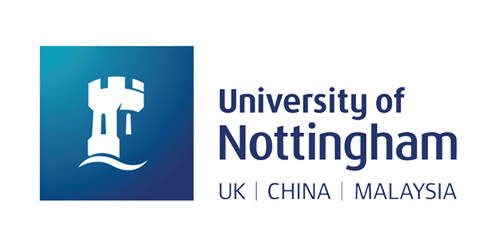

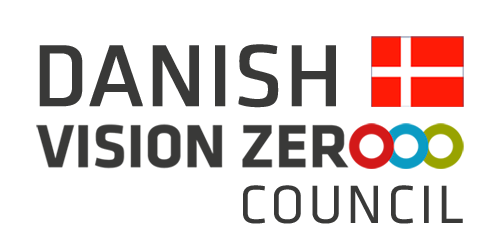
Presentations
Prof. Takashi Maeno will be talking about the well-being management in Japanese companies. First, difference in the score of happiness is discussed.
Individualism and collectivism affect the score.
Then he will talk about the good practice of well-being management in Japanese leading companies.
Finland has repeatedly been selected as the happiest nation in UN studies. How have the Scandinavian countries built an environment of wellbeing and what is the role of private companies in it? How do private companies align their actions to support wellbeing with UN Sustainable Development Goals? Examples from Metso Outotec, which is among the top 100 most sustainable corporations in the world, and from Greenstep, which is a fast growing professional services company.
Sekisui House has a global vision ” Make home the happiest place in the world”.
In order to provide the happiness of customers and realize the happiness of society, it is essential to pursue the Well-being of employees.
We will introduce Well-being Survey, Prediction of Health Examination Results Using AI and Healthy Challenge to improve the happiness of employees and workplaces.
The Covid-19 pandemic has accelerated trends in the world of work that are associated with both opportunities and challenges for health, safety and well-being. This presentation will discuss these while placing special focus on psychosocial risks that are expected to increase in light of developments concerning the changing nature of work, the use of new technologies and the increased prevalence of atypical work arrangements. It will also highlight key dilemmas going forward for occupational health, safety and well-being and associated implications for research, policy and practice.
A proper understanding of corporate culture will enhance well-being and can evolve an organization that generates innovation.
In her presentation Karina will outline the key principles and phases of participatory organisational interventions and provide examples of what type of activities can be developed to improve employee health and well-being in such interventions.
In recent years, new values such as well-being and diversity have been required in the international community.
We conducted a co-occurrence network analysis of the components of affluence described in 29 reports on well-being, extracting a core value compass with six directions to attain a prosperous future. In addition, while drawing social visions beyond that core value compass, we summarized examples of innovation that should be tackled in order to realize those social visions at the current stage.
In this speech, I will show how to derive the core value compass and social visions and introduce how to use them to create innovation.
This lecture is about how a large, global pharmaceutical company are working with ensuring mental well-being and preventing work-related stress. Mental health data can be used to ensure the necessary senior management commitment to employee mental health and well-being. Furthermore the speaker will share how the company in practice works to ensure continuous improvements in the psycho-social working environment
An increasing number of companies view employee wellbeing( health) as an important management capital and are actively implementing or supporting activities to improve employee wellbeing(health). These corporate activities can be a major driving force for the penetration of SDG policies and the achievement of the goals. Therefore, the International Organization for Standardization (ISO) is currently examining the international standardization of wellbeing management, and will report on its standardization activities.
Many danish organizations are focused on working with STG’s. They are eager to contribute to balancing use of the world and in this regard all managers are decisionmakers. This speak will focus on managers unique role in contributing to both organizations development in a more sustainable way and wellbeing among employees. Mental surplus is needed if we should be able to innovate and at the same time notice small signs of dissatisfaction among employees.
The hypothesis is that managers own wellbeing is absolutely essential for success – this is our focus!

 Finland
Finland

Topic: Building OSH capacity through Higher Education, Online Learning, and Credentialing
Vision Zero aims to promote safety, health, and well-being globally. Learning is a key element to realize Vision Zero in practice. The session focuses on diverse aspects of building OSH capacity by presenting campaigns, training programs and projects which aim to raise OSH awareness and provide tools to strengthen OSH expertise. The session also reflects existing and future challenges as well as opportunities for OSH training. What are effective and meaningful ways to learn and train OSH in educational and work context? What works and why? The session provides a forum for sharing experiences and introducing innovative means and methods of traditional and digital training. Presentations cover e.g. design and implementation of e-learning and virtual reality training.
Sub chairs




Presentations
This presentation will begin with a short review of International Occupational Hygiene Association Education Committee activities. It will also provide an overview of past, ongoing, and proposed international collaborations in education, training, and credentialing. Future directions and goals for building capacity in the profession of occupational hygiene will be discussed.
This presentation will report on the findings of an exploratory study that investigated whether and to what extent the UN Sustainable Development Goal of promoting decent work globally has already been integrated into the academic study programs for future OSH professionals in a number of European countries. Based on this data, recommendations are made on how future business and social leaders can be better empowered to address the global challenges.

 Japan
Japan

Topic: International standardization for Safety, Health and Wellbeing
In the time where ICT, AI, and robotics are developing rapidly, new technologies are enabling the new way of OSH that was not possible before. How the OSH in future will and should look like has been described in the IEC MSB white paper “Safety in the Future” (published in November 2020), and ISO is also working on how robots, which work with humans, should operate while keeping workers’ safety. This session will look at how technologies should develop in tandem with international standards, such as in the aspect of conformity assessment.
Sub chairs

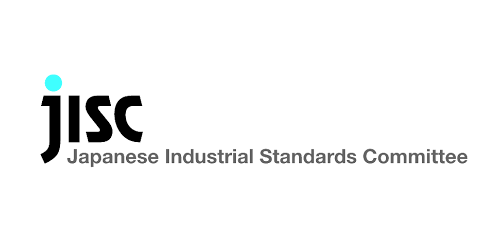
Presentations
As a research institute for OSH in Germany we are very active in national, regional and international standardization. The presentation will show some of our activities in the field of respiratory protection devices, measuring of semi-volatile substances, noise and ultrasonic noise, electromagnetic fields, collaborating robots, security of industrial applications and artificial intelligence use for machinery. From these exeriences with international standardization we have the following expectations to standardazation:
- Standardization on the world level has to be accelerated by using regional input
- With worldwide research direct international standardization is useful
- Old topics with new aspects need new standardization
- When standardize do not forget the persons with disabilities
- Collaborative Safety without Functional Safety is dangerous
- Artificial Intelligence is not Naturally Safe
- Industry 4.0 needs responsible Staff
- Responsible Staff may be a result of a culture of Vision Zero
The Market Strategy Board (MSB) is a unique entity which the ISO or the ITU-T don’t have. The MSB’s primary task is to identify and investigate the principle technological trends and market needs. The overview of the MSB will be provided by Dr Tsutsumi, the Chair of the MSB. Also, the outline of 2020 White Paper project “Safety in the Future” led by Dr Tsutsumi will be provided.
We all know that safety is important; this is not new. However, what does safety mean to a person who is poor, hungry, without shelter (and no electricity)? During my presentation, I hope to create a connection between safety and the holistic sustainability of the global community. I also hope to showcase the role international consensus standards play in creating a safe sustainable society for the emerging future.
Three directions for expanding vision of safety management
Globalization and digitalization are making changes in everything including situation related to safety. At the same time, advancing of technologies provide opportunities to improve safety approach. In this session an idea expanding the vision of safety management for realizing a holistic safety approach is to be suggested. It includes three directions, addressing more complex systems, using more intelligence, and interpreting risks as broader concept.
Different types of trade facilitation mechanisms including mutual recognition agreement (MRA) and their specifics will be explained. Roles of international standards in such trade facilitation mechanisms will be also highlighted to materialize the future society with safety, health and well-being standards.
ISO/CASCO is a policy development committee under the ISO council that works on issues relating to conformity assessment. During my presentation, I introduce the standards developed by CASCO to ensure consistency and credibility of conformity assessment. I also mention the certifications to management system standards which are some of the most popular ISO standards.
For Vision Zero to achieve its objectives it will require the development and implementation of vision based market solutions utilizing forward looking conformity assessment tools and deliverables. By optimizing the utilization of existing solutions while enabling new technologies and the evolving trend of tripartite (human, machine, environment) coexistence, market stakeholders can establish a new norm based in a system of safety.
Even today, 30,000 people die annually in Japan due to accidents. About 1,000 serious accidents related to household products happens each year, and some of them are due to misuse or carelessness by consumers.
Gas cooking stoves have historically caused many fires due to forgetting to turn off or overheating by consumers. In the 1990s, manufacturers developed a device that automatically prevents overheating. In 2008, the Japanese government introduced regulations to incorporate this device into gas cooking stoves. By 2020, fires caused by cooking stoves had been cut in half.
Initiatives to prevent such accidents are in line with the SDGs, and definitely innovations, as they bring great benefits to society. In various fields, private companies, industry associations, and governments should work closely together to create innovations in safety and ANSHIN, a unique concept in Japan, which is a sense of trust and assurance without any fear or stress.

 Japan
Japan

Topic: AI/ICT & digitalization
Artificial intelligence is thought to be the key game changer for almost all of businesses in the near future. However, nobody knows how to manage solutions including AI components, and quality management technologies for AI software is still very premature. In this session, difficulty to manage AI quality and how we can overcome the problem is to be discussed. We will put special focus on the relationship between AI quality management and the Vision Zero concept (i.e AI embedded robots working together with human).
Sub chairs




Presentations
The European Commission is committed to regulate the use of AI. The risk-based approach that will be at the core of the AI regulation will be supported by European standards, some adapted from ISO-IEC, and others developed by European Standardization Organizations like CEN, CENELEC or ETSI. In order to provide the EU with the proper set of standards, a top-down approach is being developed by the CEN-CENELEC JTC 21 taking into account European specificities. Those specificities include the need for actionable standards, the European very broad scope of risk, and the EU regulation timeline which implies approved harmonized standards by the end of 2024.
NIST contributes to the research, standards, and data required to realize the full promise of artificial intelligence (AI) as a tool that will enable American innovation, enhance economic security, and improve our quality of life. Much of NIST’s work focuses on cultivating trust in the design, development, use, and governance of AI technologies and systems. NIST is doing this by—
• Conducting fundamental research to advance trustworthy AI technologies and understand and measure their capabilities and limitations
• Establishing benchmarks and developing data and metrics to evaluate AI technologies
• Leading and participating in the development of technical AI standards
• Contributing to discussions and development of AI policies
Emerging technologies including artificial intelligence are changing the speed and complexity of society. Laws and regulations face a difficult issue: how to keep up with the change. Goal-based governance is better to address the issue than rule-based one. But it comes with another difficulty: big gap between goals and operation. AI Governance Guidelines published by the Ministry of Economy, Trade and Industry bridge the gap. They help companies improve AI governance, which is design and operation of technological, organizational, and social systems by stakeholders for the purpose of managing risks posed by the use of AI at levels acceptable to stakeholders and maximizing their positive impact. The speaker will explain AI Governance Guidelines and their background.
The Risk Evolution, Detection, Evaluation, and Control of Accidents (REDECA) framework was introduced in 2021 to highlight the role that artificial intelligence (AI) in the anticipation and control of exposure risks in a worker’s immediate environment. In this talk, we present a case study that details the implementation of the REDECA framework for occupational safety improvement of agriculture workers. We identify the related safety issues using a systematic process, and offer AI solutions that can improve the associated safety metrics.
After showing several AI case studies in safety, healthy and well-being domain, I explain the IBM’s challenges to manage AI quality supporting the AI case studies.
Presentation contains NEC’s digital business initiatives from the three perspectives of “business process,” “technology,” and “competency,” as well as its case studies.
Fujitsu researches and develops various advanced and trusted AI technologies to make the world more sustainable and to implement a better society. This talk will introduce Fujitsu’s Trusted AI technologies: explainable AI, AI quality and AI ethics focusing on cases from the healthcare and industrial plant domains.
Hitachi published a white paper on AI ethics to promote the management of AI technology.
And, it aims to use AI technology to realize a safe and secure environment for society and workplace.
I would like to these concepts and some use cases.

 Poland
Poland

Topic: Agriculture and OSH Agri (OSH) Culture
Agriculture as a sector of economy has one of the highest records of fatal accidents and injuries at work. The Vision Zero concept with its three dimensions of occupational prevention: safety, health and wellbeing proposes how to structure a prevention system to build a successful OSH culture in Agriculture – AGRI (OSH) CULTURE. People working in agriculture face many different types of occupational hazards and are exposed to many various types of occupational risks. This makes the building of AGRI OSH Culture so important but at the same time very challenging. In this session, we shall present current occupational hazards that farmers face during their work and possible solutions how to prevent them to keep safety, health and wellbeing of farmers. The session will be organized in three following subtopics:
- Environmental hazards and challenges
- Use of modern technologies and artificial intelligence.
- Unbearable burden of stress – mental health and wellbeing
Sub chairs

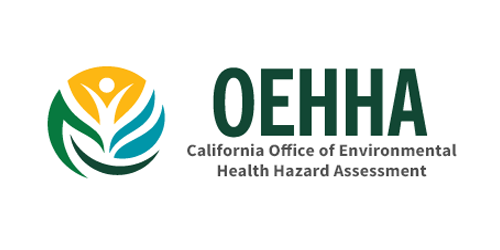


Presentations
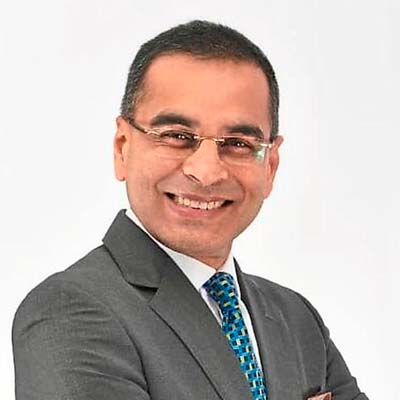
 Malaysia
Malaysia

Topic: National Strategy to promote Vision Zero
“The Vision Zero mindset that all accidents, diseases and harm at work can be prevented, has been shared by a large and still growing number of companies and partner organizations, including governments and social security institutions. Their active role in promoting Vision Zero at national level is of critical importance for achieving the objective of the global campaign, to support the development of a prevention culture based on the Vision Zero mindset.
During this session senior representatives from ministries, worker’s compensation systems and other social security organizations will present their Vision Zero strategies and programs and share valuable experiences related to the successful promotion of Vision Zero in their countries. Reflecting the diverse national contexts, different formats have been developed, ranging from a focus on Zero Accidents or integrating Vision Zero as part of a wider prevention campaign, to developing a new national prevention strategy dedicated to promoting Vision Zero.”
Sub chairs













